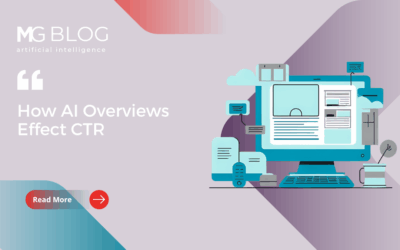
Photo by Stephen Dawson on Unsplash
The marketing technology landscape is enormous. According to Forrester, marketing technology tools consume about 20% of the average B2B marketing budget, with over 8,000 tools as of 2021. CRM, marketing automation, content marketing, customer experience, digital marketing, SEO, and sales intelligence are just a few of the sub-genres of the ever-expanding marketing solution stack. In addition to subscription costs, a considerable investment of time is dedicated to onboarding, integrating, and managing these tools. That’s not to mention the tools that aren’t used that bleed precious budget while no one notices.
Given these costs, it’s no surprise that marketing leaders have high expectations regarding their marketing tech stack. Why wouldn’t you? The cutting-edge technology that leading companies are using to power these tools makes them more sophisticated than ever. However, part of getting the most from your marketing tech stack is having a clear understanding of capabilities and limitations.
The “All-in-one” Marketing Technology Solution
Expectation: An “all-in-one” solution will fix everything and allow us to get rid of overlapping tools.
Reality: Rarely will one solution cover all of your marketing needs, and that’s okay.
Have you ever seen an ad for a marketing technology product that “does it all?” Manage your web analytics; ad spend, landing pages, federal income taxes, and laundry, all with one great tool! Don’t get me wrong – there are a lot of great multi-functional products out there. (Hubspot is a fantastic example!)
However, expecting every martech solution packaged in a piece of multi-functional digital marketing software to be perfect for your situation, making the product a one-stop-shop, is a fantasy. The reality is that at any given time you’ll have several tools that overlap.
For instance, your team might have the ability to schedule social media posts with your Canva Pro, HubSpot, and Sprout Social subscriptions. Still, if they used all three tools for this purpose, you can bet it’d be a lot of extra work to keep the content calendar organized. Does that mean you should drop any of these from your stack? Probably not, but that’s up to you to evaluate.
The challenge is to get the most out of each tool without complicating processes to the point where your data isn’t syncing across platforms, and there’s no single source of truth. Some products will go unused, but the marketing team will stay organized and work off of better data.
Marketing Technology Works “Out of the Box”
Expectation: Your new marketing technology software will be ready to use the moment after you sign up.
Reality: The plug-and-play version is built for specific situations and may not be workable within your marketing tech stack. Evaluate integrations carefully, and plan for training and setup time.
When searching for your next marketing technology solution, vendors might tell you at some point that it works “out of the box.” Little to no configuration is needed; just log in, press some magic buttons, and you’re all set!
Again, expecting technology to do the heavy lifting for you can lead to disappointment. Likely, every piece of marketing technology you onboard will have to be connected to other tools, and “out of the box” can quickly become a six-month project involving the marketing team, sales, IT, and developers.
At Merritt Group we’ve overseen countless CRM and marketing automation integrations and each one has its own set of unique challenges. It’s imperative to get all stakeholders in the same room before you start to source a solution, especially when multiple teams are involved.
Sometimes problems arise due to complications in your marketing technology stack, and sometimes it’s because the “out of the box” version of the solution you wanted wasn’t intended for your use case. Sometimes marketers can be blinded by that “new shiny thing” without taking the time to check the boxes.
Depending on your level of technical knowledge and your company infrastructure, it’s a good idea to bring IT in early when evaluating marketing technology solutions. Even if the end goal is to run smarter, automated and optimized marketing campaigns you can’t overlook the company-wide buy-in that’s needed for true digital transformation.
They’ll be able to give you a more realistic perspective on what it will take to onboard something new, even when a plug and play option is included.
Always Work Smarter, Not Harder
Expectation: Marketing technology that integrates machine learning and AI makes smarter decisions than you can, making optimization quick and easy!
Reality: These tools will learn off of whatever is fed to them and will only be as smart as the settings and data you choose.
We use smartphones and smartwatches every day. Even vacuum cleaners are getting smarter. We all want more innovative marketing solutions that will figure things out for us. Every day, the automation software and platforms marketers use leverage sophisticated technology such as AI and machine-learning designed to deliver optimal results.
A great example of this is the technology behind online advertising platforms. When setting up a digital campaign, settings range from fully manual selections to automated selections that pretty much set up your campaign for you. Go ahead and check that “do it for me” box on your next digital ad campaign. All of the rich technology that’s meant to find the best takers for your offer will kick in and get to work.
And that’s exactly what the machines will do. If your goal is “clicks” to your website, the algorithms will find people who click. They may or may not buy, though. And that’s fine if you simply wanted to drive traffic to your site, but not if you wanted direct revenue.
A digital marketing campaign must be designed from start to finish with specific goals in mind to achieve great results. Expecting digital advertising platform technology to overcome flaws in the messaging, creative, campaign design, and data exchange required to see top-notch results is unrealistic. Although technology is improving, human analysis and intervention are still needed, even when working with “smart” solutions. Yes, this is hard work, but it will pay off and save you time and money in the long run.
You Get What You Pay For
Expectation: The bigger the investment made, the better the tool will work.
Reality: You may not need all the bells and whistles. Do your research.
Expensive isn’t always better. What’s best for one marketing team may not work for another, and one company’s bargain is a complete waste of dollars elsewhere. This is one reason why so many marketing technology solutions exist in the first place. They’re designed for needs of all shapes and sizes.
Investing in new marketing technology solely because it’s the “gold standard” without doing your homework is likely to lead to disappointment. There are expensive solutions out there that are great, and there are also free ones that might be just what your marketing team needs right now.
Many marketing technology tools have free versions. Sometimes these are limited trials, and sometimes there are tiered options that can save you money if you don’t need all the bells and whistles included in the premium product. Starting small can help you decide what the best fit will be.
One caveat to this is that if you decide to rely on a free tool from a new company, weigh the risks of the company failing or discontinuing support. It happens. How much of a headache would it be to move to a different platform? Would it be automated? Would you lose your data? These questions should all be taken into consideration.
In general, you may expect that paying more gets you more, but the reality is that there’s probably a marketing technology tool you’re using right now that you could stand to downgrade. Evaluate your marketing tech stack every three to six months to determine if that’s true and make plans to downgrade any subscriptions that don’t make sense anymore.
Marketing Technology Tools Are Out of My Reach
Expectation: Building out my martech stack is not something I have the resources or support for.
Reality: Even making small improvements can enhance your marketing efforts.
Let’s examine another point of view. While a lot of marketers expect amazing results from sophisticated marketing platforms, some have skepticism about the true benefits of marketing technology for their company.
Especially if you have a small team or limited budget, you’re probably wondering if there is true value in expanding your martech stack. Your problems feel unique, but in reality, somebody somewhere has been in your situation and they built a tool to help.
The truth is, along with all of the commitment it takes to build out a well-oiled marketing technology ecosystem, you’ll still find that doing this well will help you execute more efficiently on your marketing strategy.
So if your head is spinning trying to keep track of customer relationship management, search engine optimization, data management, marketing operations, attribution, real-time reporting, user experience, and more, know that there are plenty of tools designed to help you out.
Luckily, you don’t have to take on marketing technology stack challenges all on your own. When you work with Merritt Group’s performance marketing team, we evaluate your needs and current technology to help you build a better martech stack.



